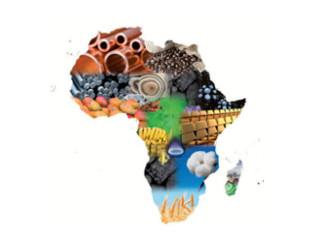
The launch of the Continental Free Trade Area (CFTA) negotiations by the AU leaders in June 2015 in Johannesburgwas a milestone. Once in place, the free trade area will cover more than a billion people with a continental GDP of over US$ 3 trillion.
Successful implementation of the CFTA will enable members to realize their potential to expand and accelerate the dynamism of intra-African trade, including the declared objective of increasing trade by 50 percent among African countries, by 2022. Intra-African trade today averages 16 percent, compared to 70 percent for Europe, 50 percent for Asia or 21 percent for Latin America.
It is true that the composition of intra-African trade is much more diversified than extra-African trade, with manufacturing representing 67 percent of exports compared to 32 percent for exports to Europe, 18 percent to the United States and 14 percent to China. Boosting intra-African trade is therefore critical to ensuring structural transformation, productive jobs and inclusive growth for Africa.
Harnessing this potential has been constrained by current tariff structures which make it cheaper for African countries to export to an external trading partner than to an African counterpart. Tariff protection within Africa averages about 8.7 percent but only 2.5 percent to the rest of the world. This problem will be exacerbated with the move to reciprocal but asymmetrical trade agreements, as implied by the full implementation of the recently concluded Economic Partnership Agreements (EPAs). If the EPAs are fully implemented before the CFTA, it will continue to be relatively more attractive for African countries to export to Europe than to one another reinforcing a trade regime with Europe that has hardly changed in the six decades following independence.
In addition, according to economic modelling undertaken at ECA, the Mega Regional Trade Agreements (MRTAs) - i.e. the Trans-Pacific Partnership of the Pacific Rim countries, the Regional Comprehensive Economic Partnership of Asian countries and the Trans-Atlantic Trade and Investment Partnership between Europe and the United States - will potentially result in loss of market share by African countries through preference erosion and competitive pressures. The expected decline in Africa’s trade in these regions will only be mitigated if Africa implements its own MRTA in the form of the CFTA . Let us be realistic: it has become clear that the global trade reforms through the WTO’s Doha Round are not forthcoming. This is why Africa needs to make its own move and it needs to do it now. So the question is: are we moving fast enough?
The indicative date for the finalization of the CFTA is October 2017. Although much progress has been made to prepare the ground for negotiations, there is need for a well thought-out strategy for the management of the CFTA negotiations if this deadline is to be met. Taking into account that 54 countries are participating in the negotiations, each with differing capacities and interests, this is not easy. The expected scope of the agreements is wide and covers trade in goods, trade in services, investment, intellectual property rights and competition policy. It is a high ambition. No less than the goal is the creation of a single pan-African trade regime out of today’s multiple and overlapping regimes, looking at the eventual formation of an Africa-wide customs union.
If Africa is to succeed, indeed it needs a strategy. What form should this strategy take?
First, there is a need for a draft template agreement to be used as the basis for negotiations. This would help to save an enormous amount of time since the member states would not be required to prepare and exchange draft negotiating texts but rather work from a pan-African template that embodies the aspirations of the Abuja Treaty. Given the current significant differences in the technical negotiating capacity, a draft template agreement would level the playing field by ensuring that each country is given the opportunity to study and review such template agreement and formulate better-informed negotiating positions. It will help build consensus and achieve a level of ambition greater than what has been observed recently.
Second, the draft template agreement should include the eight main landing zones that can be feasibly achieved by October 2017: (i) agreement on trade in goods, which is required before any free trade area can technically exist; (ii) a framework agreement on trade in services, given the importance of services to trade in goods and its growing weight in continental GDP, with a built-in agenda for progressive liberalization of the various service sectors; (iii) special agreement on agriculture (iv) an industrial pillar to ensure that special provisions are built into the agreement, consistent with the imperative of industrial development; (v) front-loaded rules for a common investment area to complement an Africa-wide free trade area, prioritize forward and backward linkages spanning both agriculture and industry, and avoid the race to the bottom as African countries compete to offer investment incentives; (vi) trade remedies and dispute settlement arrangements including a frontloaded competition policy framework to regulate unfair trade practices (vii) provisions on trade facilitation and customs cooperation to improve border efficiency; and (viii) institutional arrangements for implementation, which will require creation of a CFTA Secretariat to oversee the implementation of the agreement.
This is doable. Bringing the CFTA into effect will not be easy. But utilizing a draft template agreement in the negotiations will make success more likely and achieved more quickly. However, to ensure political credibility, such an approach requires high level institutional endorsement.
A political decision is required calling for the CFTA negotiations to be prioritized over all other intra-African and extra-African trade negotiations. This would ease capacity and financial pressures, but more importantly ensure that the CFTA provides a pan-African outcome with a single economic space and common trade and investment rules.
Africa is running out of time. If the first flagship programme of Agenda 2063 is set to fail then we will be in trouble.